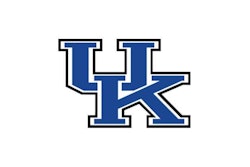With a bit more evidence, a male gymnast might have won a spot on the girls' team.
When the United States Supreme Court ruled in Brentwood v. Tennessee Secondary School Athletic Association [531 U.S. 288 (2001)] that the Tennessee state high school athletic association was a state actor for constitutional purposes [see "Parochial Rule," May 2003, p. 20], it sent a warning to all state activity associations that their rules and procedures could now be challenged on equal protection, due process and other constitutional grounds. Yet, that decision did not mean that state athletic associations are automatically state actors. Attorneys challenging the rules of state athletic associations can prevail if they are able to prove to the courts that there exists such a close nexus between the state and the athletic association that the organization's seemingly private behavior may be fairly treated as that of the state itself. While the Brentwood case clearly makes this argument easier to prove, just citing the Supreme Court's decision is not enough to turn the actions of a high school athletic association into those of a state actor. A good example of the courts' minimum requirements is Bukowski v. Wisconsin Interscholastic Athletic Association [2006 Wisc. App. LEXIS 1126]. Keith Bukowski was a student at Stevens Point Area Senior High School when he petitioned the Wisconsin Interscholastic Athletic Association to allow him to compete as a member of the girls' gymnastics team. It was the school's only gymnastics team, and participation by boys was not allowed. The WIAA, which is a voluntary, unincorporated, nonprofit organization of public and private high schools in the state of Wisconsin that organizes, directs and controls interscholastic athletic programs, rejected Bukowski's request. In support of its decision, the WIAA cited Article VI of the WIAA constitution, which "prohibit[s] all types of interscholastic activity involving boys and girls competing with or against each other." After the WIAA denied his request, Bukowski went to court seeking a temporary injunction prohibiting the WIAA from enforcing its rules against him. In support of his motion, Bukowski argued that the WIAA rule prohibiting boys and girls from competing with or against each other violated both the equal-protection clause of the Fourteenth Amendment of the United States Constitution and Title IX of the federal Education Amendments of 1972. The circuit court denied Bukowski's motion and dismissed the case. On appeal, the Court of Appeals of Wisconsin, District IV, began by examining Bukowski's claim that the WIAA's action violated the Fourteenth Amendment's equal-protection clause. In support of his claim, Bukowski argued that as a state actor, the WIAA was prohibited from enforcing the rule because it unreasonably discriminated against him based on his gender. The WIAA countered that since Bukowski failed to provide any evidence demonstrating that the WIAA was a state actor, the Fourteenth Amendment did not apply. In ruling in favor of the WIAA, the court held that to establish an equal-protection claim, Bukowski must first establish through factual evidence that the WIAA was a state actor. Yet, the only evidence presented, the court noted, was an affidavit by the superintendent of the Stevens Point Area Public School District, in which the superintendent stated that the school received federal funding. While Bukowski failed to show how the receipt of federal funds by the school could be attributed to the WIAA, the court held that even if the WIAA had received federal funds directly, that alone would not be enough to make a private entity such as the WIAA a state actor for equal-protection purposes. Under the "Nexus" or "Entanglement" theory, the court ruled that Bukowski must establish "that the State is so pervasively entwined with the management and control of the WIAA to the point of largely overlapping identity." Bukowski, however, failed to present such evidence. Beyond this, the court found that all the cases cited by Bukowski in support of his equal-protection claim involved race discrimination. Race discrimination claims, the court noted, are evaluated under a strict-scrutiny analysis, which requires a state actor to show that the challenged rule is essential to achieve a compelling government objective. Equal-protection claims based on gender discrimination, however, are subject to the lower "heightened scrutiny" analysis. Under the heightened-scrutiny test, the court held that a state actor is only required to show that the challenged rule is substantially related to an important government objective. Since Bukowski's equal-protection argument rested on the wrong legal standard, the court ruled, his argument must also fail. Bukowski's final argument was that the WIAA's actions violated Title IX of the Education Amendments of 1972, which prohibits sex discrimination "under any education program or activity receiving federal financial assistance." In rejecting this argument as well, the court held that Bukowski provided no explanation of how Title IX should apply to his circumstances and provided no relevant legal authority in the form of Title IX cases. In addition, the court ruled that Bukowski failed to demonstrate that the WIAA received federal funding. As with his equal-protection claim, Bukowski failed to explain how federal funds accruing to the school (and not to the WIAA) constituted federal funding of the WIAA. While the court concluded that Bukowski failed to show that the WIAA was a state actor or received federal funds, subjecting it to the requirements of the federal equal-protection clause and Title IX, the case should not be viewed as a total victory for state high school athletic associations. Significantly, the court noted that if it had more facts, it could probably have been able to find that the WIAA was so intricately involved with all of the public high schools in the State of Wisconsin, that its rules and regulations impact those high schools, and that every one of those high schools receive federal aid, so as to be a state actor. As the court stated, its decision was based more on Bukowski's failure to establish his claims than on those claims' merits. Finally, the court's decision in Bukowski should serve as a cautionary tale to any attorney challenging state high school athletic association rules. The Brentwood decision, while extremely important, does not automatically subject every state's athletic association to constitutional safeguards and requirements. The only way to show that the athletic association is a state actor is to demonstrate that the state is so pervasively entwined with the management and control of the association that it is impossible to identify where the authority of one organization begins and the other one ends.
































